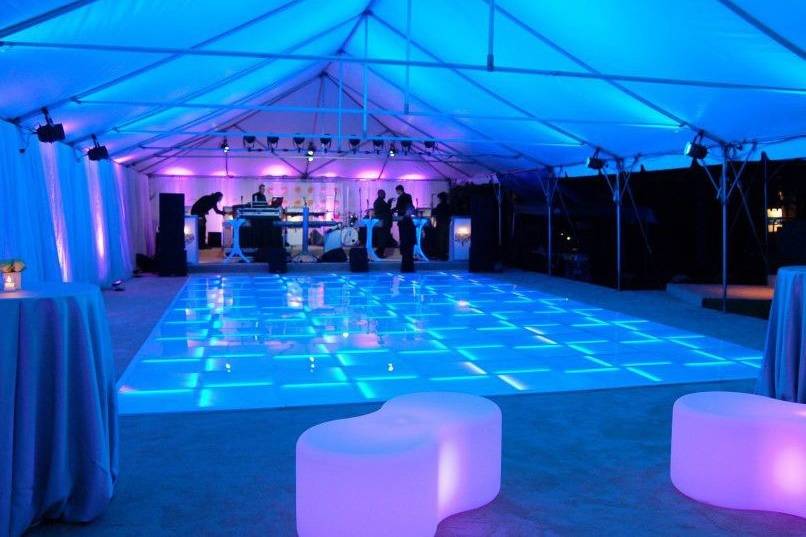
The main colors are red, azure, and yellow. These hues cannot be created by blending different hues combined. Secondary colors, such as green, orange, and purple, are created by mixing main hues. Third-level hues are created by combining a primary color with a secondary color. Grasping these basic relationships helps designers choose hues that enhance one another and produce a aesthetically pleasing show. Combining these colors on an LED dance floor can lead to dynamic and exciting effects that attract the focus of participants.
Hue value also plays a crucial role in design. Colors can be classified as hot or chill. Warm colors, such as red, tangerine, and golden, often to elicit emotions of excitement and warmth. In contrast, cool colors like blue, emerald, and violet typically create a calm and soothing atmosphere. Creators can use these dance floor rental with led lights color values to establish the ambiance for various types of events. For instance, a celebration environment may gain from warm colors that energize the audience, while a further calm event might use chill hues to offer a soothing influence.
In furthermore to color combinations and temperature, luminosity and intensity are vital elements to consider. Luminosity denotes to how light or dark a hue looks, while saturation measures the vividness of a hue. Bright, intense hues can generate a vibrant and lively environment, ideal for dancing surfaces. On the other hand, softer, less intense colors can generate a further subdued atmosphere. Through manipulating brightness and intensity, creators can draw attention to particular sections of the dance floor or create visual pathways, leading participants through the find this space.
Ultimately, it is crucial to consider the psychological effects of color in LED dance floor designs. Different colors can elicit different emotions and responses. For instance, red is often linked with zeal and energy, while blue can be soothing and tranquil. Understanding these associations enables creators to strategically use hues to influence the behavior of participants. Through incorporating color principles into light-emitting diode dance floor layouts, designers can enhance the overall encounter, rendering it memorable and enjoyable for all participating.